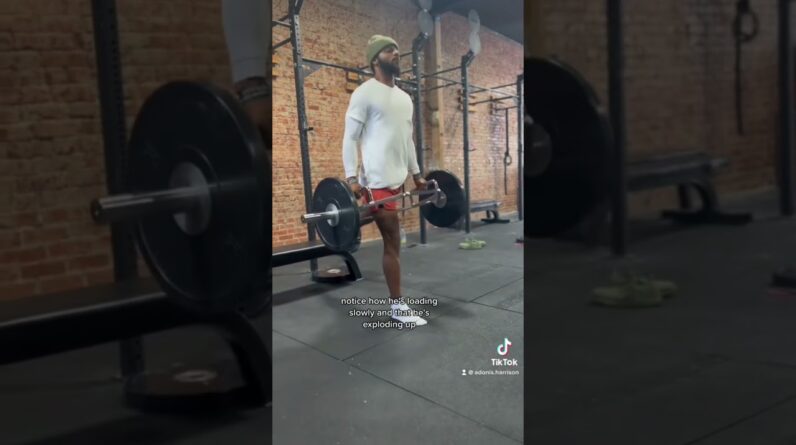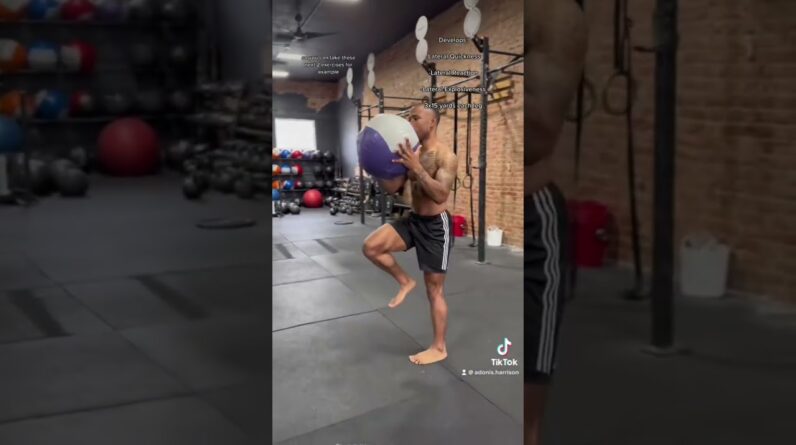Speed training is a vital aspect of any athlete’s or fitness enthusiast’s workout regimen. Whether you’re a sprinter looking to improve your race times or a soccer player looking to outrun the opposition, speed training can help you achieve your goals. Speed training not only improves your ability to move quickly, but it also enhances your overall fitness level and helps to prevent injury. In this article, we will present a comprehensive speed training workout that will aid in boosting your speed, power, and agility. This workout is suitable for all fitness levels and can be easily integrated into your regular routine. In the following sections, we will discuss the importance of a proper warm-up and cool-down, as well as provide step-by-step instructions for various speed training exercises. Let’s get started on taking your performance to new heights!
A proper warm-up is crucial before any speed training session. It helps to prepare the body for the workout by increasing blood flow, raising muscle and body temperature, and activating the nervous system. A warm-up also helps to reduce the risk of injury by gradually increasing the heart rate and preparing the muscles for the workout ahead.
Here are some suggested warm-up exercises for a speed training workout:
Dynamic stretching: This type of stretching involves moving the body through a full range of motion, such as leg swings and arm circles. Dynamic stretching helps to increase flexibility and prepare the muscles for the workout.
Jogging: A light jog is a great way to increase blood flow and raise the body temperature. Start with a slow jog and gradually increase the pace.
Skipping: Skipping is a great way to warm up the lower body and get the blood flowing. Start with a slow skip and gradually increase the pace.
High Knees: High knees is a great cardio and leg warmup exercise, it help to increase the heart rate and get the muscles ready for the workout.
Remember to start with a light to moderate intensity and gradually increase the intensity as you progress through your warm-up. The goal is to prepare the body for the workout, not exhaust it. A proper warm-up should take around 10-15 minutes.
Speed training exercises are designed to improve your ability to move quickly and explosively. These exercises focus on building power, agility, and speed, which are all essential for athletes and fitness enthusiasts. Here are some examples of exercises that can be included in a speed training workout:
Sprints: Sprints are a great way to build speed and power. They can be done on a track, a field, or even on a treadmill. Start with short sprints and gradually increase the distance as you improve.
Plyometrics: Plyometric exercises are designed to increase power and explosiveness. These exercises include jump squats, box jumps, and bounding.
Agility Drills: Agility drills help to improve your ability to change direction quickly. These exercises include ladder drills, cone drills, and shuttle runs.
Resistance Training: Resistance training is a great way to build strength and power. Exercises such as squats, deadlifts, and lunges can be included in a speed training workout to build muscle and increase power.
Speed endurance exercises: Speed endurance exercises help to maintain high-speed over a longer period of time, an example of this type of exercise is the fartlek, a type of interval training where you alternate between periods of high-speed running and lower intensity running or jogging.
It’s important to note that proper form is essential when performing these exercises. Be sure to use proper technique and start with a weight or intensity that is appropriate for your fitness level. As you improve, gradually increase the weight or intensity. Also, it is recommended to include a variety of exercises in your speed training workout to target different muscle groups and energy systems.
A proper cool-down is just as important as a warm-up when it comes to speed training. A cool-down helps to gradually decrease the heart rate and bring the body back to a resting state. It also helps to reduce muscle soreness and stiffness by promoting blood flow and oxygen to the muscles.
Here are some suggested cool-down exercises for a speed training workout:
Static stretching: This type of stretching involves holding a stretch for a certain amount of time, such as 30 seconds. Static stretching helps to increase flexibility and reduce muscle soreness.
Foam rolling: This self-massage technique helps to release muscle tension and reduce soreness by applying pressure to specific areas of the body.
Walking: A gentle walk is a great way to cool down after a speed training workout. It helps to gradually decrease the heart rate and bring the body back to a resting state.
Yoga: Yoga helps to improve flexibility, balance and stability, and also helps to reduce muscle tension and relax the mind.
Remember to start with a light intensity and gradually decrease the intensity as you progress through your cool-down. The goal is to bring the body back to a resting state and reduce muscle soreness. A proper cool-down should take around 5-10 minutes.
We have outlined a comprehensive speed training workout that is suitable for all fitness levels. We have discussed the importance of a proper warm-up and cool-down, and provided detailed instructions for a variety of speed training exercises that will help you build power, agility, and speed.
It’s important to remember that speed training is not just for athletes, it is a valuable addition to any fitness routine. Regularly incorporating speed training exercises into your workout will help to improve your overall fitness level, reduce the risk of injury, and increase your ability to move quickly and explosively.
By following the workout plan outlined in this article and incorporating a proper warm-up and cool-down, you will be well on your way to reaching your speed training goals. Remember to start with a weight or intensity that is appropriate for your fitness level and to include a variety of exercises to target different muscle groups and energy systems. With consistency and dedication, you will soon see improvements in your performance.







